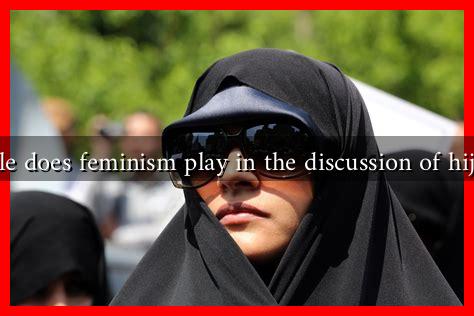-
Table of Contents
What Role Does Feminism Play in the Discussion of Hijab Laws?
The hijab, a traditional headscarf worn by many Muslim women, has become a focal point in discussions surrounding women’s rights, religious freedom, and cultural identity. As debates over hijab laws intensify in various countries, feminism plays a crucial role in shaping the discourse. This article explores the intersection of feminism and hijab laws, examining how feminist perspectives influence the conversation around autonomy, choice, and cultural expression.
The Feminist Perspective on Choice and Autonomy
At the heart of feminist discourse is the principle of choice. Feminists argue that women should have the autonomy to make decisions about their bodies and how they express their identities. This perspective is particularly relevant in discussions about hijab laws, where the choice to wear or not wear a hijab can be influenced by societal, cultural, and legal pressures.
- Empowerment through Choice: Many feminists advocate for the right of women to choose to wear the hijab as an expression of their identity and faith. This perspective emphasizes that wearing the hijab can be a form of empowerment rather than oppression.
- Oppression vs. Liberation: Conversely, some feminists argue that mandatory hijab laws can be oppressive, stripping women of their agency. This duality highlights the complexity of the issue, where the hijab can symbolize both liberation and constraint.
Case Studies: Global Perspectives on Hijab Laws
Different countries have adopted varying stances on hijab laws, reflecting diverse cultural and political landscapes. Here are a few notable examples:
- France: In 2004, France implemented a law prohibiting the wearing of conspicuous religious symbols, including the hijab, in public schools. This law sparked significant feminist debate, with some arguing it promotes secularism and gender equality, while others contend it infringes on personal freedoms and religious expression.
- Iran: Following the 1979 Islamic Revolution, Iran mandated the wearing of the hijab for women. Feminist activists within Iran have challenged these laws, advocating for women’s rights and the freedom to choose their attire. Movements like “My Stealthy Freedom” have gained international attention, highlighting the struggle against enforced hijab laws.
- Turkey: In 2013, Turkey lifted a ban on the hijab in public institutions, reflecting a shift towards greater religious freedom. Feminists in Turkey have debated this change, with some viewing it as a victory for personal choice, while others express concern about the potential for increased pressure on women to conform to religious norms.
Statistics and Public Opinion
Public opinion on hijab laws varies widely, influenced by cultural, religious, and political factors. A 2020 survey conducted by the Pew Research Center revealed that:
- In countries like Indonesia and Malaysia, a significant majority of Muslim women support the right to wear the hijab.
- Conversely, in Western nations, many non-Muslims view the hijab as a symbol of oppression, leading to calls for bans in public spaces.
These statistics underscore the importance of understanding the diverse perspectives within feminist discourse on hijab laws. Feminism must navigate these complexities to advocate for women’s rights effectively.
The Role of Intersectionality in Feminism
Intersectionality, a concept introduced by Kimberlé Crenshaw, is vital in understanding how various forms of discrimination intersect. In the context of hijab laws, intersectional feminism considers how race, religion, and gender identity influence women’s experiences and choices regarding the hijab.
- Racial and Religious Identity: For many women, the hijab is intertwined with their racial and religious identity. Feminists argue that discussions about hijab laws must consider these intersections to avoid marginalizing specific groups.
- Global Solidarity: Feminism can foster global solidarity among women facing similar challenges related to hijab laws, promoting a more inclusive dialogue that respects diverse experiences.
Conclusion: The Path Forward
The discussion of hijab laws is complex and multifaceted, with feminism playing a pivotal role in shaping the narrative. By advocating for choice, autonomy, and intersectionality, feminists can contribute to a more nuanced understanding of the hijab as both a symbol of empowerment and a potential tool of oppression. As societies continue to grapple with these issues, it is essential to listen to the voices of women directly affected by hijab laws, ensuring that their experiences and choices are at the forefront of the conversation.
In summary, feminism’s role in the discussion of hijab laws is not monolithic; it encompasses a spectrum of perspectives that reflect the diverse realities of women’s lives. By embracing this complexity, we can work towards a more equitable and inclusive society that respects individual choices and cultural identities.
For further reading on this topic, you can explore resources from organizations like Women’s Rights Advocacy and Pew Research Center.

